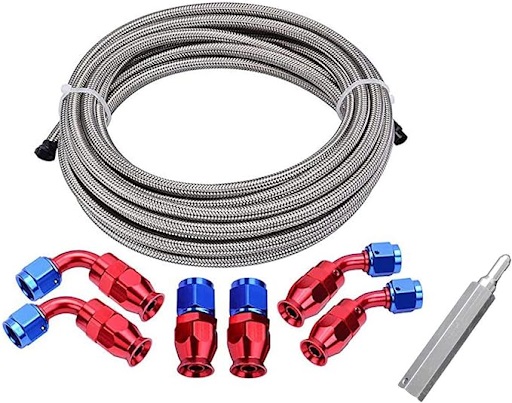Power amplifiers (PA) are used in almost all electronic systems, such as audio equipment, broadcasting, telecommunications, and even in medical fields. These devices amplify a signal to a level which is capable of driving a load with the requisite amount of energy and quality. This article focuses on PAs, their classification, usage, design factors, and the current trends in the development of PAs.
A PA is an electronic device which is used to amplify the signal and make it capable of driving the load like a speaker, antenna or motor. While the voltage amplifier mainly increases the voltage of the signal, the PA increases both the voltage and current of the signal and therefore increases the power. They are used in most electrical devices where high-power output is needed to complete a certain task efficiently.
Furthermore, PAs play a crucial role in various advanced technologies, such as wireless communication systems and radar, where the efficient transmission and reception of signals are paramount. The advancements in semiconductor technology have also significantly improved the performance and efficiency of PAs, making them integral components in modern electronic applications.
Types of Power Amplifiers
There are several types of PAs classified according to their class of operation and their features and uses are as follows:
Class A: Class A amplifiers have high linearity and low distortion and work with a constant current through the output transistors even when there is no signal. Although this design IS typically found inside a 2 channel power amplifier, as it provides high sound quality, it results in high power dissipation and low efficiency. Thus, Class A amplifiers are not suitable for power-efficient applications.
Class B: These amplifiers enhance efficiency in that the input signal is first divided into two halves, each of which is then amplified by a transistor. This push-pull configuration cuts down on power loss but adds crossover distortion at the point where the signal switches between transistors. However, Class B amplifiers are widely used in audio amplification, where power efficiency is critical.
Class AB: Being a combination of Class A and Class B designs, Class AB amplifiers are characterized by good linearity and efficiency. These amplifiers work in Class A mode for low signal levels and in Class B, for high signal levels, thus reducing distortion while at the same time increasing efficiency; they are commonly used in high fidelity audio systems.
Class D: These amplifiers employ pulse-width modulation (PWM) or any other form of digital modulation in order to have high efficiency. Class D amplifiers quickly turn the output transistors on and off thus creating a pulse train that is proportional to the input signal. These pulses are then filtered to give the amplified output signal. Class D amplifiers have efficiencies of more than 90% and are used in portable and battery-powered devices and in high power audio systems.
Important Factors to Consider
The following are some of the factors that should be considered when developing PA designs:
Power amplifier design entails several factors to account for so as to meet the required performance in a specific application. Some of the critical factors include:
Efficiency: Efficiency is a critical parameter especially for battery operated and high power applications (as seen here). However, designers have to pay attention to other performance characteristics like linearity and distortion to meet the required application criteria.
Linearity: Linearity means how well the output of the amplifier follows the input without distorting it. High linearity is desirable for such uses as audio and communication where the signal quality is critical.
Thermal Management: Power amplifiers are known to heat during operation and this is more so when there is high power output. In any given system, the temperature plays a significant role in the performance and thus thermal management is crucial. This may include a heat sink, cooling fan, or other materials that may help in the dispersion of heat.
Impedance Matching: To reduce the standing wave and minimize the reflected waves from the load, impedance matching between the amplifier and the load is very important. According to this site: https://blog.minicircuits.com/impedance-matching-devices/, the impedances are not equal, the system is less efficient, and there is also a danger of damaging either the amplifier or the load.
New Developments in Power Amplifiers
The various types of PAs that are available on the market are not stagnant, due to enhancements in the materials used, the methods of designing and fabrication, and the semiconductors used. Some of the latest trends and innovations include:
GaN and SiC Devices: The new generation of semiconductors such as Gallium nitride (GaN) and silicon carbide (SiC) are thus more efficient in terms of power control compared to the traditional silicon devices. Such materials are utilized in high frequency and high power devices including radio frequency amplifiers and power converters.
Digital and Software-Defined Amplifiers: The improvements in the DSP and SDR technologies also make the amplifier designs more versatile and programmable. They can be adjusted in real time and can support almost any modulation scheme and signal format that may be used.
Miniaturization and Integration: In the current world of miniaturization of electronic devices, the PA designs are also compressed in size but do not compromise on performance. Future developments in packaging and integration technology, including SiP and SoC solutions are found to be key factors in the miniaturization of amplifiers.
Conclusion
PAs are the most essential part of contemporary electronic systems and are used for signal amplification in various cases. It is therefore crucial for one to comprehend the various kinds of Pas, as well as their strengths as well as their limitations, in order to end up choosing the right amplifiers for the right job.
In the future, with the development of new technology, new types of Pas will continue to emerge which are more efficient, smaller, and can be applied in many fields. In audio systems, telecommunications, medical devices, and industrial equipment, PAs will remain the workhorse and a key foundation for the design of many electronic devices.








